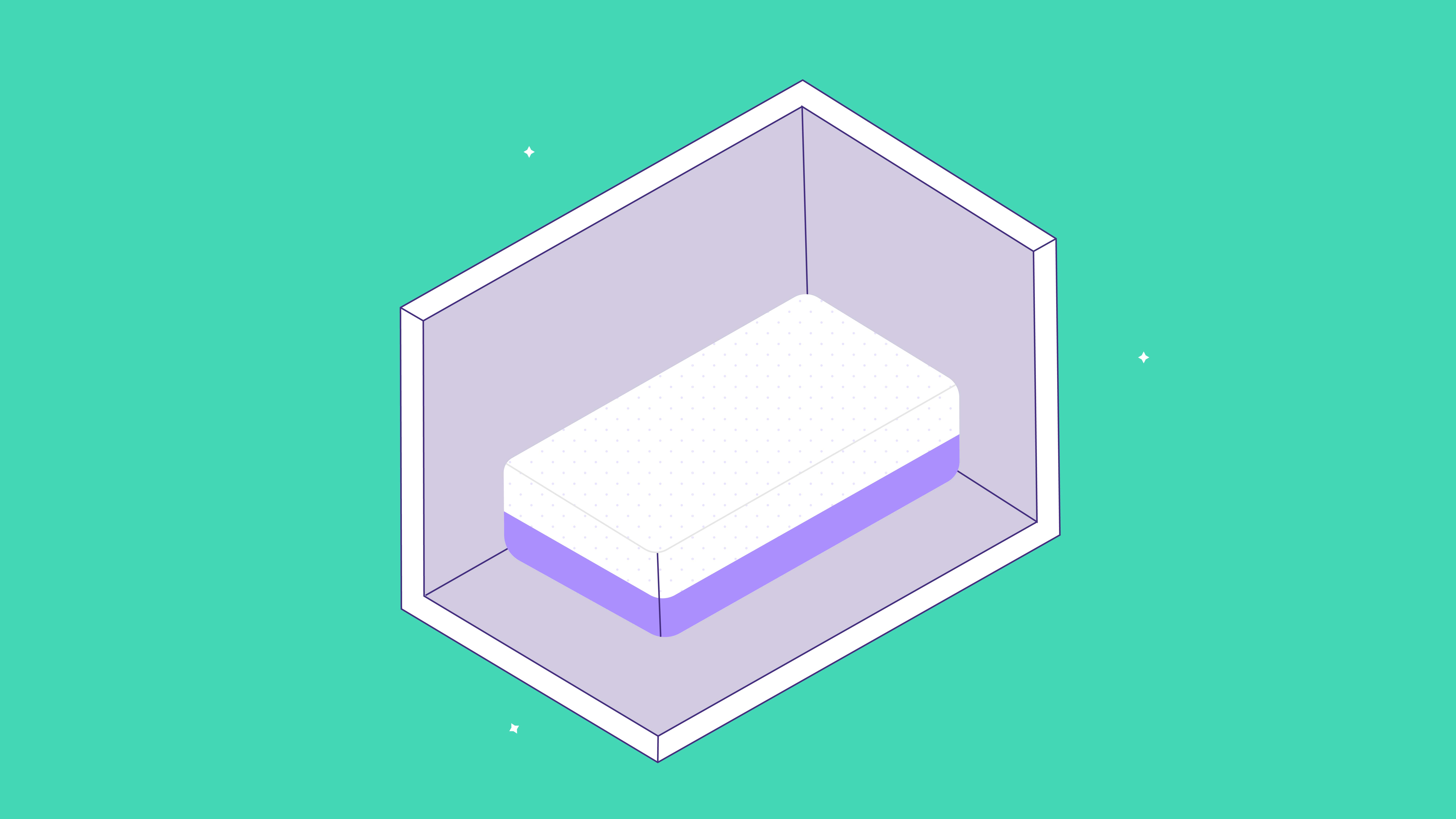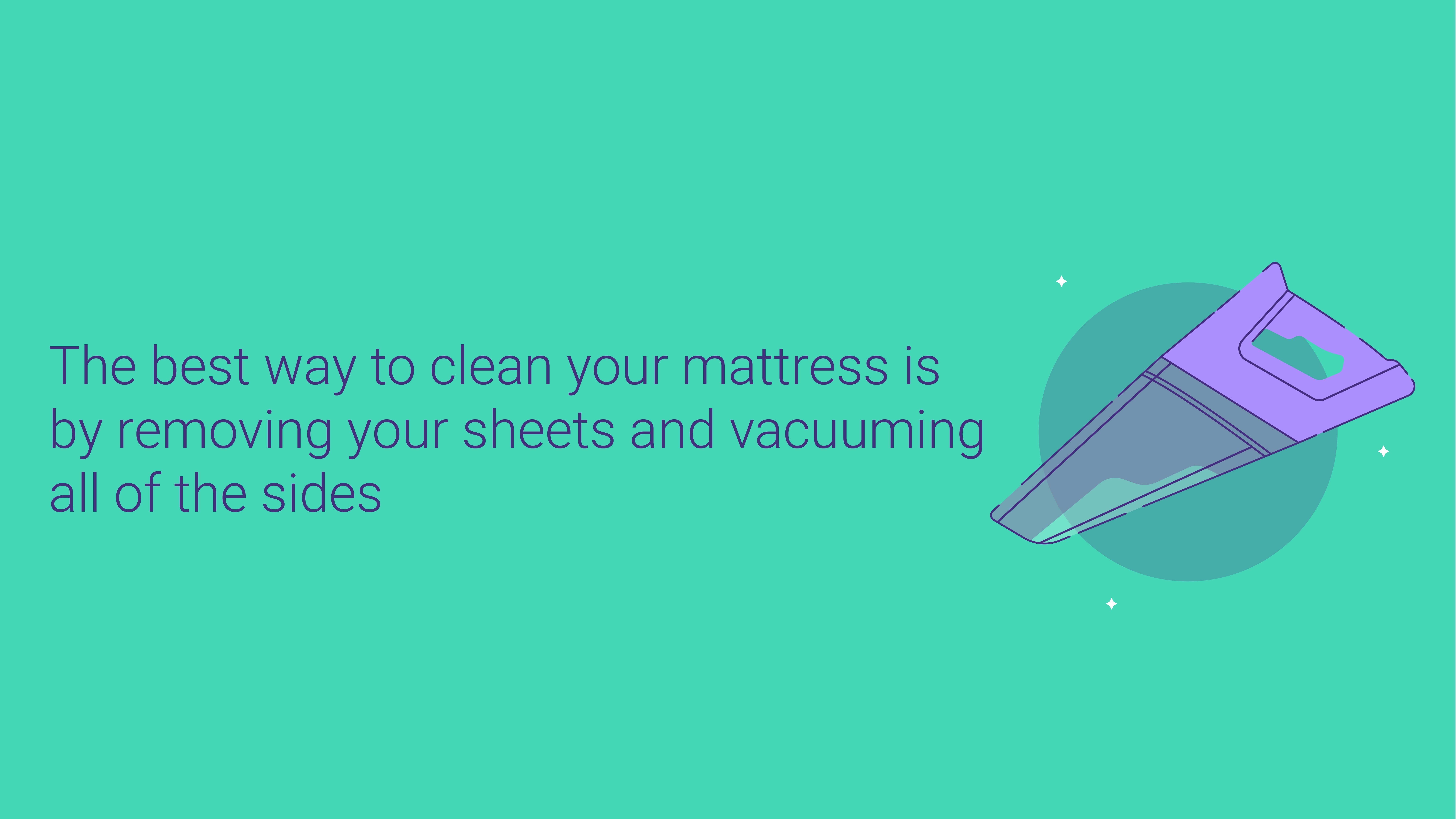
How to Store a Mattress

- Clean your mattress thoroughly before storing it to prevent dust and debris accumulation. Vacuum all sides, scrub stains with upholstery cleaner, and consider using baking soda for odor absorption. Allow the mattress to air dry before storage to maintain freshness.
- Use a plastic cover or a high-quality mattress storage bag to wrap your mattress. This protective covering prevents dust, pests, and mold. Secure the covering with packing tape to ensure it stays in place during storage.
- Lay the mattress flat while in storage to prevent damage to coils and inner workings. Avoid standing it upright, as this can lead to permanent damage such as lumping and sagging. Lay the mattress on a flat surface to preserve its structural integrity.
There are several reasons you may have to put your mattress in storage. Whether you’re moving to a new home or downsizing, it is always a great idea to store your mattress with care.
Some mattresses can be a pricey investment, but they can last for up to ten years with the proper maintenance. Taking good care of your mattress may even help you save money in the future. Let’s talk about how to store a mattress properly and review some steps you can take to protect your mattress from dust, dirt, and other pests.
1. Clean and Air Out Your Mattress
Making sure your mattress is clean before putting it in storage is the best way to prevent damage. Storing a dirty mattress will only allow more dust and debris to accumulate while in storage. The best way to clean your mattress is by removing your sheets and vacuuming all of the sides. You can also go the extra mile and scrub all stains with upholstery cleaner. Just be sure to air dry your bed once you’re finished.
Another great trick you can try is sprinkling baking soda on the exterior of your mattress before vacuuming. After sprinkling the baking soda, you’ll want to wait ten minutes to vacuum your mattress to ensure all the lingering odors are absorbed. This will keep your mattress smelling fresh while it’s packed away.
2. Use a Mattress Storage Cover or Wrap Your Bed in Plastic
It’s a good idea to wrap your mattress in a plastic cover before you put it in storage. Since it’s hard to maintain cleanliness in a storage unit, your bed is a lot more vulnerable to damage, so you should cover your mattress in a thick plastic sheet and secure it with packing tape to keep it clean.
Also, consider purchasing a high-quality mattress bag because these covers are durable and prevent mold from accumulating. Mattress storage bags also keep your bed dry, which can be helpful if unexpected flooding occurs.
3. Lay the Mattress Flat
Standing your mattress upright may seem like a good idea to save space in your storage unit. However, this can cause permanent damage to the coils and inner workings of your mattress. Even keeping your mattress upright for a short period can cause it to lump and sag. It’s best to lay your mattress flat while in storage so the springs and cushioning remain damage-free.
4. Avoid Placing Items on Top of the Mattress
Mattresses take up a lot of space, particularly when they lie flat. With that being said, you’ll want to consider any additional pieces of furniture you’ll be placing in storage as well. You should avoid placing heavy items on top of your mattress in an attempt to save space. Heavy objects can damage mattress springs or even leave indentions in memory foam.
Things to Keep in Mind While Storing Your Mattress
Before you put your mattress in storage, there are several things you should keep in mind. Below, we outline some of the biggest threats to your mattress while it’s in storage. We’ll also discuss some of the best storage spaces to use.

Pests
Some pests are known to eat fabric and cause mattress damage. One of the most common pests that pose a threat to your mattress is moths. Moths like to lay eggs on fabric, and once they hatch into caterpillars, they can live in your mattress for weeks.
However, these creatures are not the only ones that like to feast on and damage bed fabric. Other pests, including carpet beetles, firebrats, and termites, are known to eat the organic fibers found in mattress covers and stuffing.
Moisture and Mold
When mattresses are stored in humid climates, they tend to retain more moisture. This can be a big problem because moisture can facilitate the growth of mold. It’s also not uncommon for storage units to become flooded, and your mattress can be immersed in water, leaving it unsalvageable.
Professional mattress restoration companies might be able to save a water-damaged bed, but this can be pretty pricey. We recommend using a moisture-proof bag to protect your mattress from water damage.
Types of Storage Spaces
You’ll need to consider what type of storage unit is best for your mattress to prevent damages. Putting your mattress in a garage may be more affordable, but these are not always the best storage areas.
Humidity is a huge risk in these spaces, and it increases the likelihood of mildew and mold accumulating. Sometimes, it’s better to opt for a rented storage unit for a more controlled storage environment. They can also provide more space for your mattress than a cluttered attic or basement.
Another thing to watch for is the type of climate in your storage unit. Placing your mattress in cooler climates can lead to freezing damage and may ruin your mattress.
If you are renting a traditional storage unit, consider upgrading from a traditional unit to climate-controlled storage. Opting for climate control will ensure that your storage space will have heat in the winter and stay cool in the summer, safeguarding your expensive mattress and bed from severe temperature changes.
FAQS
How do I store a mattress topper?
Storing a mattress topper is similar to storing a mattress because you need to clean it thoroughly before you put it in storage. Once your mattress topper is cleaned, let it air dry for 24 hours. Be sure the topper is completely dry before storing it. If any moisture is left behind, it may cause mold and mildew growth. It’s also a good idea to place your topper in a protective storage bag to prevent dirt, dust mites, and liquids from causing damage.
Should I stack multiple mattresses in storage?
Stacking multiple mattresses isn’t always the best option because they may become damaged due to lack of support or too much-added pressure. If you do need to stack them, you should lay your mattresses flat on top of each other, with the heaviest ones on the bottom. Keeping the lightest mattress on the top may prevent sagging caused by uneven support.
What’s the best way to move my mattress?
Most people try to move their mattresses by placing them on the roof of their cars. However, this can cause dirt, debris, and insects to fall onto your mattress during the process of moving. Not to mention, the weather is unpredictable, and water droplets from rain or snow may seep into the mattress. It’s better to move your bed by placing it in an enclosed vehicle, like a moving truck. This way, your mattress stays dry and clean.
Can you store a mattress in a garage?
Storing your mattress in your garage isn’t a bad option, providing your garage is spacious. However, it’s important to consider how dusty and dirty garages can be and take the necessary measures to keep your garage tidy. Also, you’ll still need to wrap your mattress in durable plastic to keep bugs and moisture away from your mattress.
Can I store my mattress on my bed?
Keeping your mattress on a bed frame while in storage may cause it to become easily damaged. It’s better to store these items individually to ensure your bed set is protected. Be sure to wrap headboards and footboards individually with a protective covering to keep them clean. If you have a box spring or mattress foundation, keep these items stored separately as well.
Conclusion
Putting a high-quality mattress in storage may take a little bit of work, but the payoff is worth it. Making sure your mattress is clean before you store it can keep it smelling fresh after months in storage. Additionally, wrapping it in plastic covering helps keep pesky bugs from feasting on your mattress. Taking these precautions is the best way to keep your bed in good condition for years to come and may save you from spending extra money on a new mattress too soon.
